Before Miele implemented Maestra, the team had no email marketing in place and dealing with customer data was a huge challenge. For every customer in the database, they would have to create up to five different customer profiles in the software they were using. Three years ago, the company decided to automate communications with customers. They reached out to a marketing […]
Miele Increased Their Revenue from Personalized Marketing by 21.6%
Challenges
Increase sales generated by email campaigns
Solutions
Merge, unify and segment the customer database
Launch personalized bulk and triggered campaigns, such as the welcome series, abandoned cart emails, and surveys
Launch personalized bulk and triggered campaigns, such as the welcome series, abandoned cart emails, and surveys
Results
Campaigns generated 21.6% more revenue in the first 8 months of 2021 compared to the same period in 2020 when mailing lists had not yet been segmented in such detail
3.6% of the revenue is now generated by email communications
3.6% of the revenue is now generated by email communications
Integrated with:
Website, Power BI
Noteworthy features
Different welcome email series for professionals (architects, designers) and end customers
Before Miele implemented Maestra, the team had no email marketing in place and dealing with customer data was a huge challenge. For every customer in the database, they would have to create up to five different customer profiles in the software they were using. Three years ago, the company decided to automate communications with customers. They reached out to a marketing agency to implement Maestra’s CDP.
Today, the brand segments its customers, sends promotional and content campaigns and has begun to automate communications. A full-fledged direct marketing strategy is currently being built, with visible, real-time results in Power BI reports.
Before we started working with our marketing agency (Email Soldiers) and Maestra, our email marketing was almost non-existent. We would typically only send out a newsletter once a month, and this would have to be created manually by our team. Systems had not been integrated with each other, and mailing subscriptions were stored in a spreadsheet. When a customer unsubscribed, our team would have to remove them manually from the list by clicking on them one at a time. Contacts had to be manually uploaded, cleansed and unified.
Maestra made it possible not only to send automated campaigns, but it also became a single system for collecting customer data and communicating with our audience. Thanks to these new features, we are now moving towards end-to-end analytics.
Customer data cleansing, unification and segmentation are important not only for campaigns, but also for exporting segments from the platform to create targeted ads. We are currently working on a loyalty program, and Maestra’s platform allows us to check how many customers meet certain criteria and how the database is spread out across different levels of the loyalty program.
Marketing Automation Results
-
21%increase in revenue generated by email campaigns in the first 8 months of 2021, compared with the same period in 2020
-
3,6%of the revenue is now generated by email campaigns
Miele’s Data from Power BI. Last-click attribution method used
We’ll explore how we achieved these results by discussing:
- How the platform was chosen and what goals we had in mind;
- How the customer database was segmented;
- How we came up with the idea of sending bulk email content;
- How we started automating communications with customers by using trigger campaigns;
- How we transfer data to Power BI and build reports based on this data.
Which Criteria were used to Select the Marketing Automation Platform
We chose Maestra together with the Email Soldiers marketing agency. We made this decision based on our forecasted growth potential. At the start of the collaboration, Miele didn’t have any complex campaigns. We wanted to build an extensive sequence of triggers, as well as connect web push notifications and recommendations. Because of this, we chose a platform that would allow us to implement all our plans for the future.
How We Segmented the Customer Base for Targeted Direct Marketing
Previously, contacts that had been collected from our two websites and at events were stored without any kind of structure or organization. One customer could have had five different customer profiles in our database.
Because of this, before launching any campaigns, it was important to organize the database so that multiple emails or irrelevant messages weren’t all sent to one customer. To do this, managers from Email Soldiers exported the customer database and used scripts to cleanse and unify it. Now, customers are sorted according to:
- Type of contact: professionals and end customers;
- Source: which of our websites they visited;
- Region;
- Categories they made purchases from;
- Average order value.
This database segmentation approach allowed the team at Miele to automate their marketing.
How We Launched Bulk Campaigns and Introduced AMP Technology
At first, only promotional campaigns were sent to customers. The Email Soldiers team created them based on Miele’s list of planned promotions:
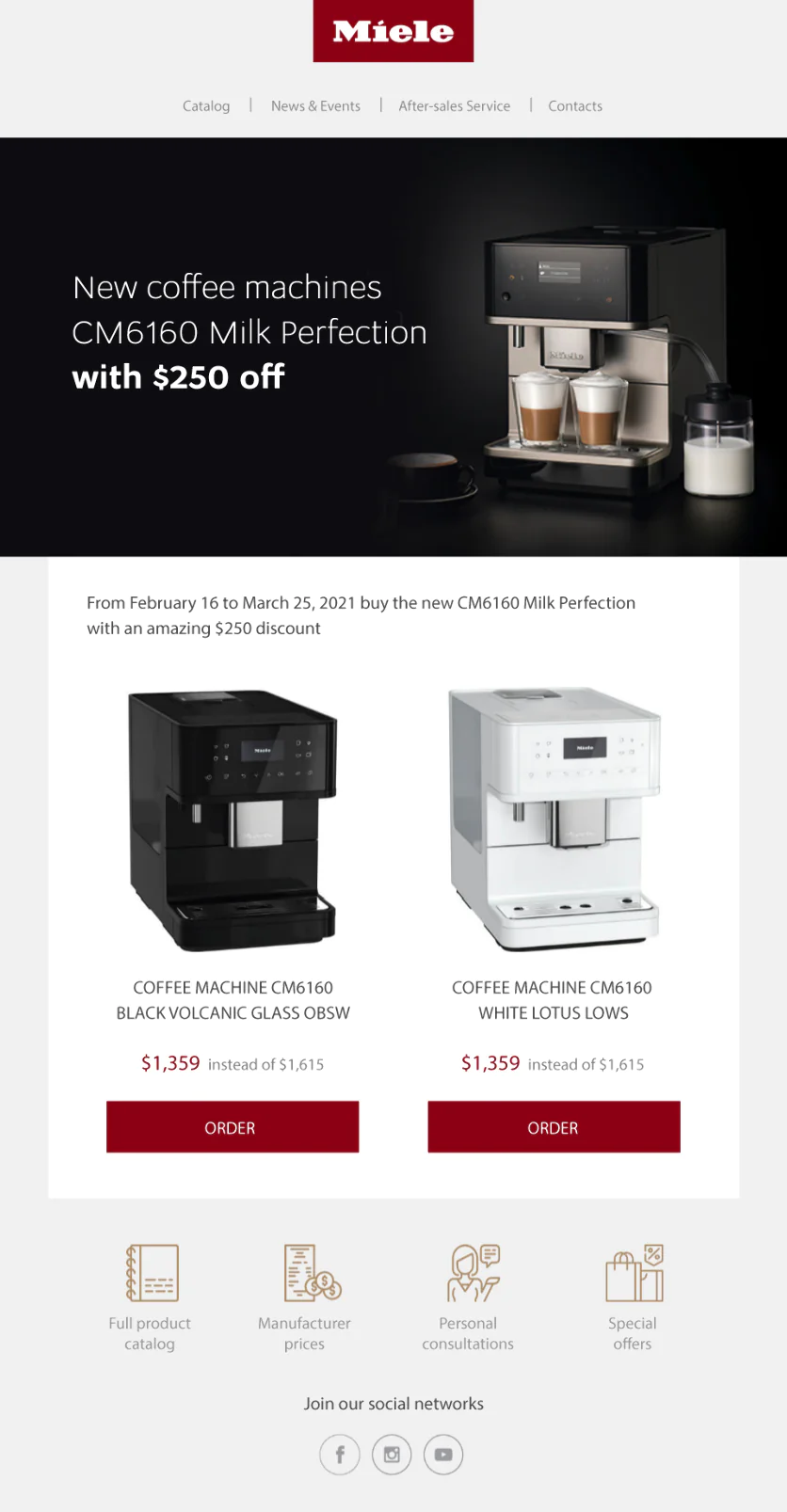
Promotional campaign with a discount on coffee machines
About a year later, we added content marketing campaigns. Based on the open and click rates, we can tell that customers are highly engaged with the emails they receive. This format also provides the opportunity to experiment with different types of communication.
The main purpose of content marketing campaigns is to increase customer loyalty, with the additional purpose of boosting cross-selling when it comes to things like maintenance/care products, for example. The campaigns focus on how to properly handle, use, and take care of appliances. At first, we came up with topics spontaneously. But later we split them up into primary categories such as for the kitchen, for cleaning, and for washing. Content marketing campaigns are sent once a week:
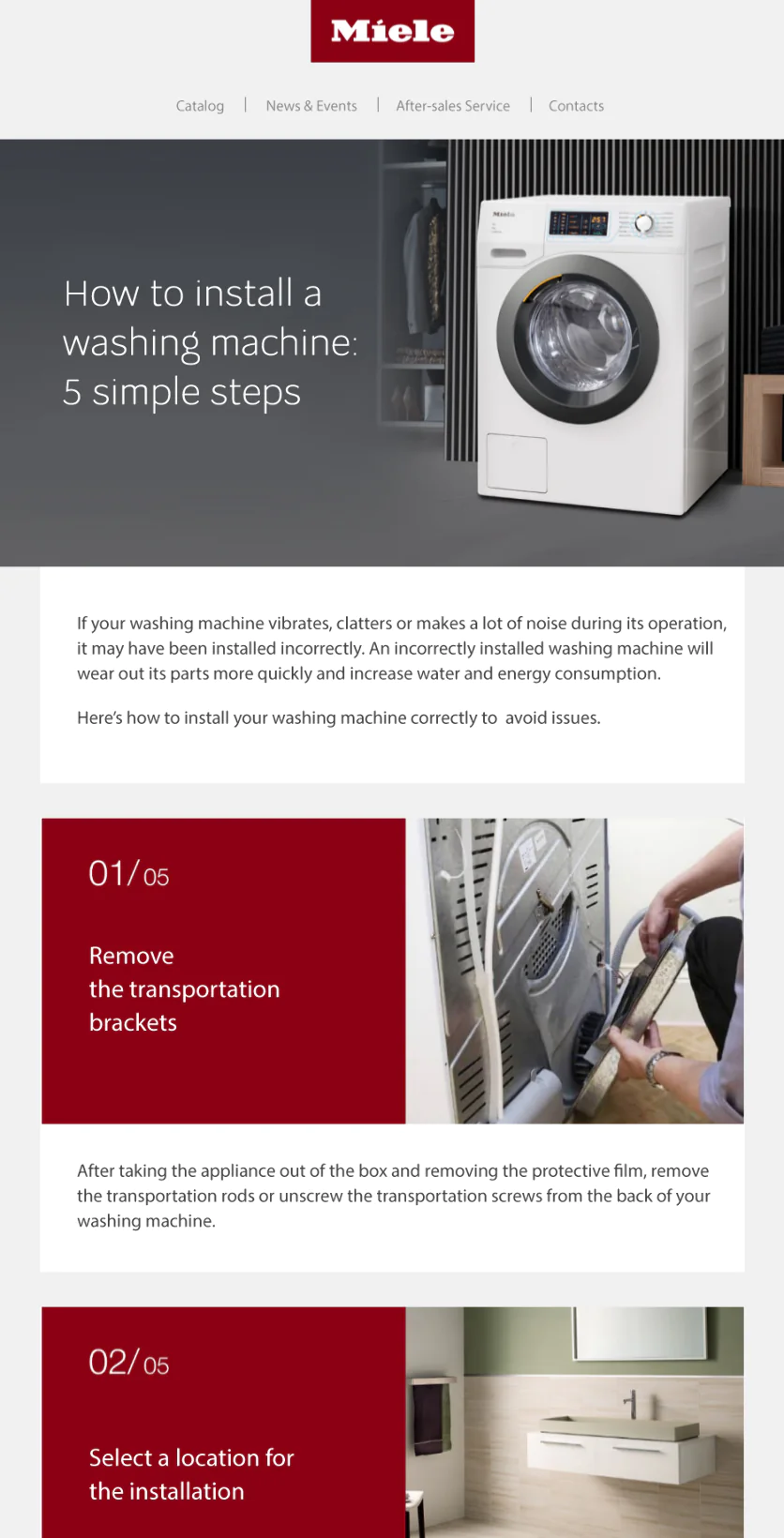
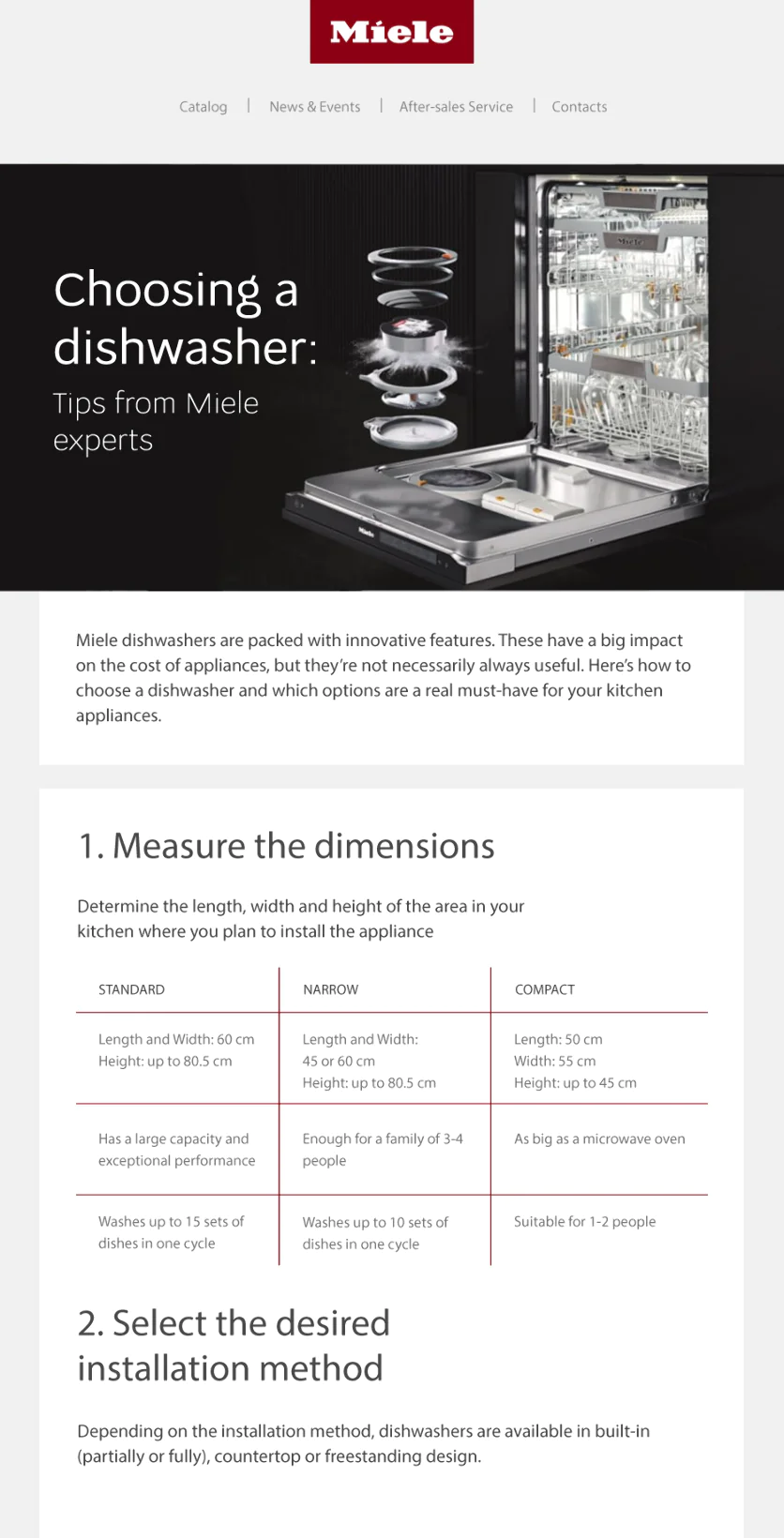
Content emails are great at generating sales. Our most effective content marketing campaign turned out to be the “5 tips on caring for your dishwasher.”
Recently, we launched an experimental AMP campaign. If this campaign proves to be effective, we will be using this feature more often.
Maestra’s platform allows us to send targeted campaigns, pinpointing the exact information needed to increase the value of our communications with customer.
Recently, we added a second channel alongside emails — web push notifications. For now, we use it manually, and mainly to support promotions.
The platform also helps us collect more customer data. Thanks to surveys in emails, we can measure customer satisfaction and collect feedback after promotional events.
We build multi-level segments, and use them for campaigns and for database analysis. For example, we keep track of the percentage of customers who have submitted their information on the website and placed an order, as well as track their order location.
It’s convenient to track segment actions on the platform. For example, by appliance type. The details of a specific customer can also be broken down to which subscriptions they’ve activated, which actions they have performed and where their purchases had been made.
How to Automate Communication With Customers at Different Stages of The Buying Journey
Automating communications was the next step after the launch of content marketing campaigns. Here are some examples of trigger emails.
Welcome series.The welcome email series is always different for professionals (designers, architects) and end customers. The segment is determined depending on our first touchpoint with the customer: at an event, at a store, or on the website. The welcome sequence for professionals consists of one email with a survey, allowing Miele to invite subscribers to events that may be of interest:
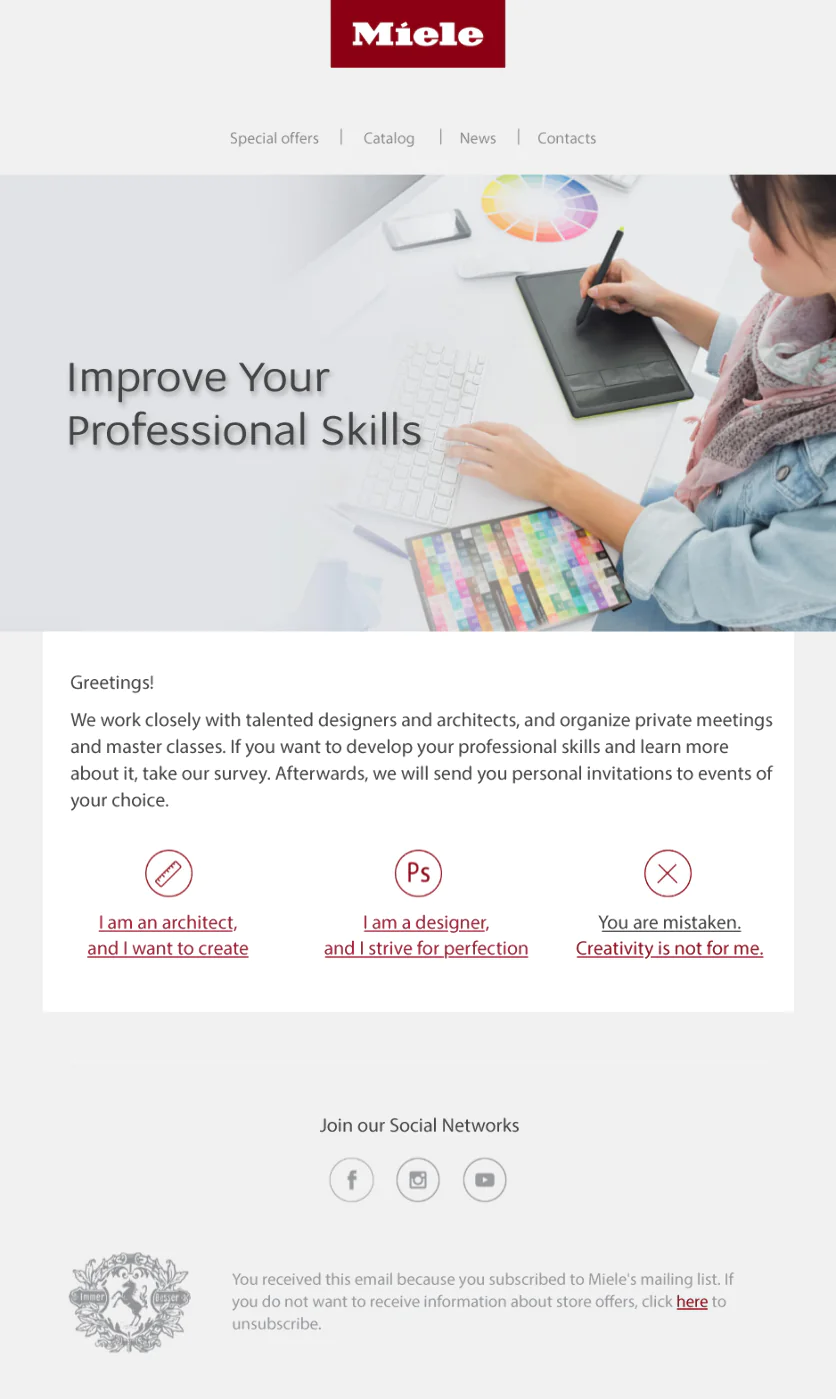
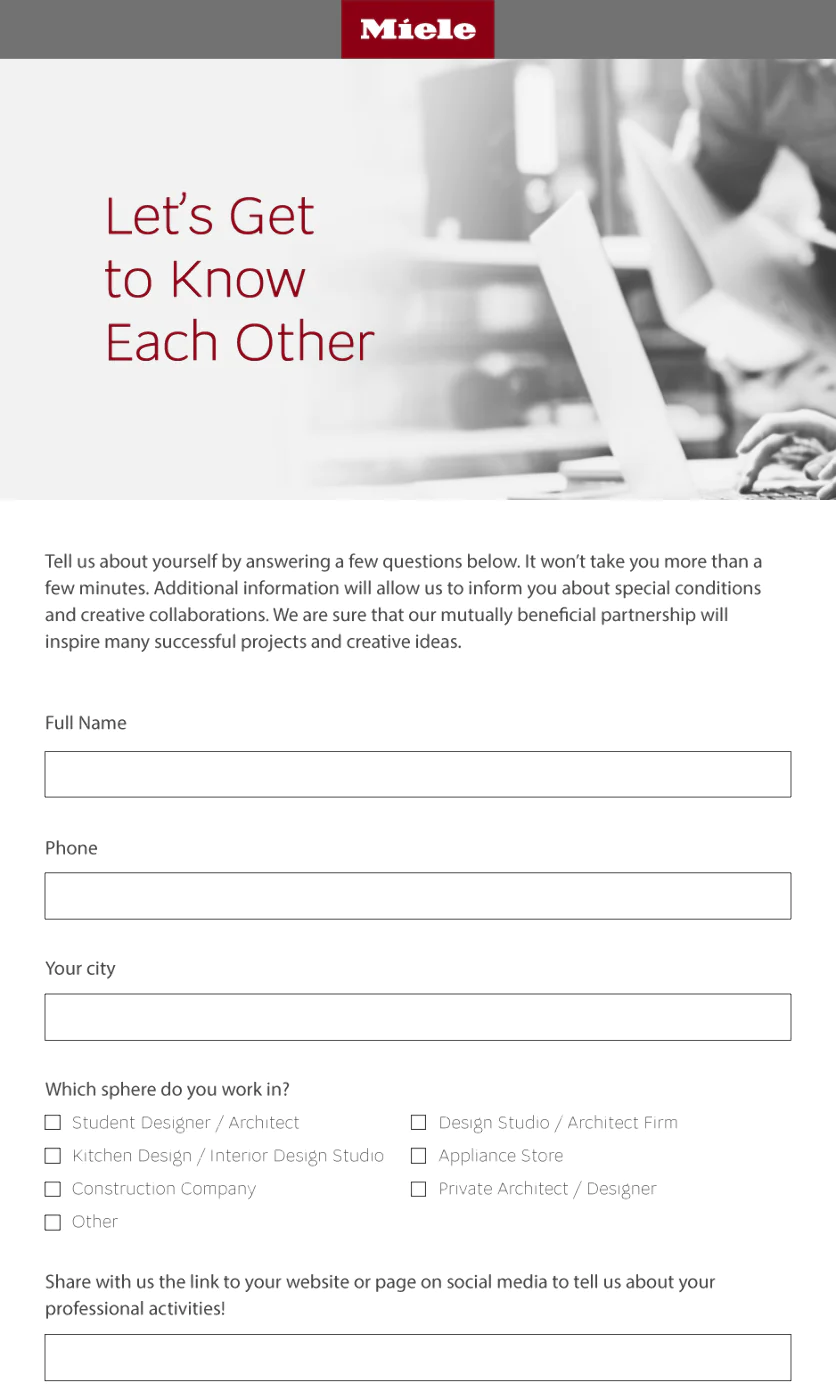
In the survey, the subscriber specifies the field in which they work — data which is then used for segmentation
The welcome series for customers consists of four emails and introduces them to Miele’s range of products and advantages:
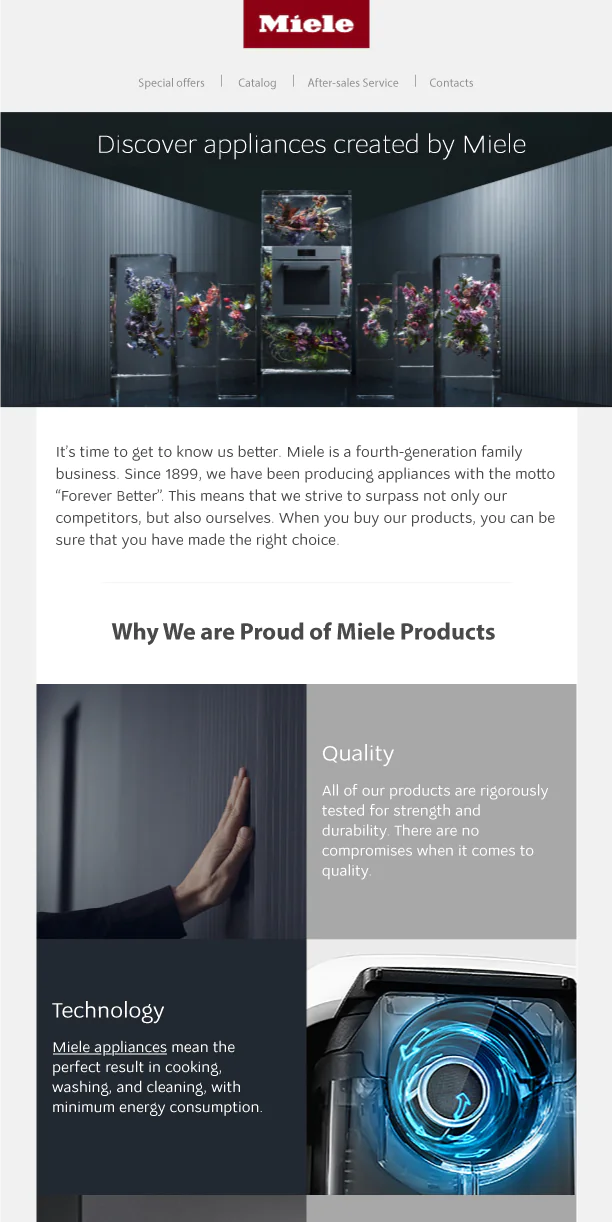
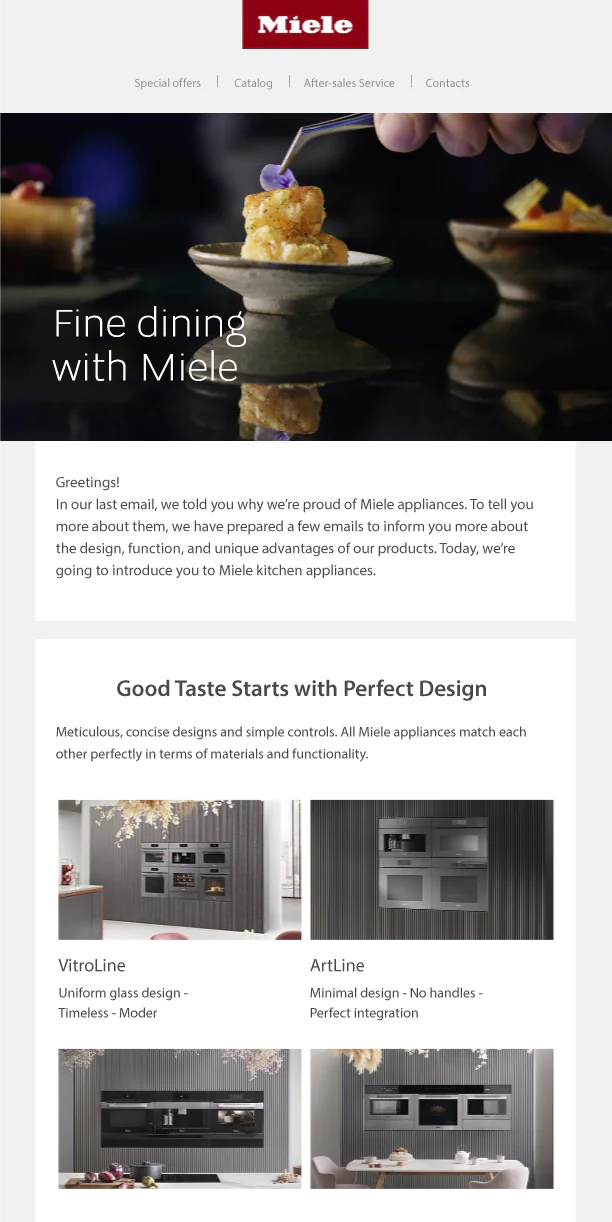
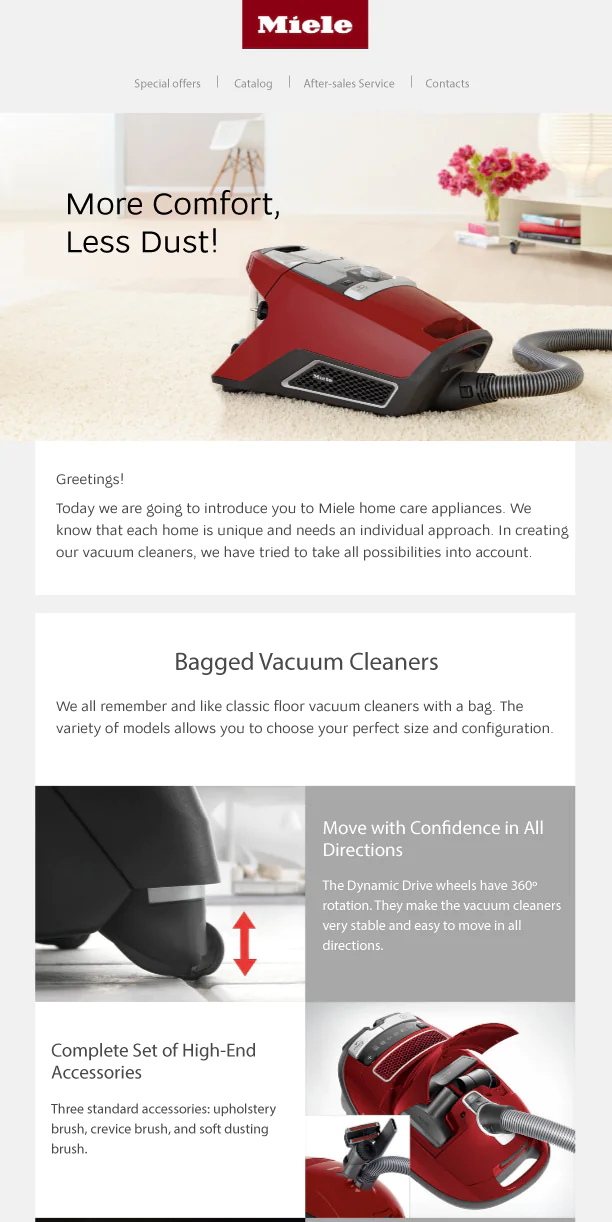
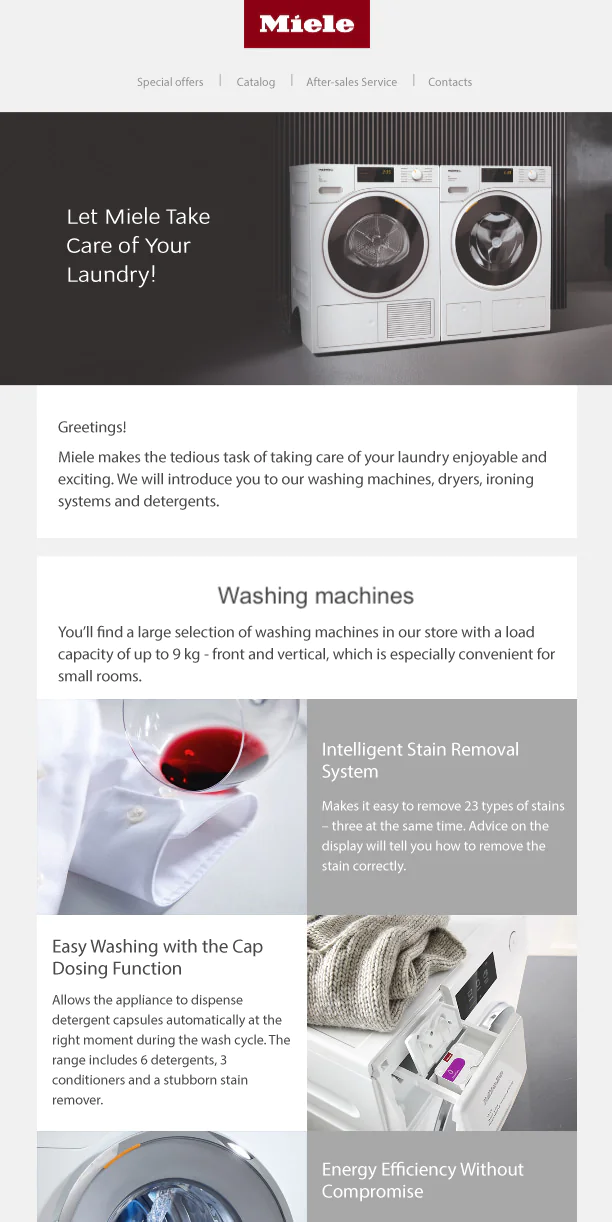
The first welcome email for end customers focuses on Miele’s benefits in general. The other three introduce the subscriber to the primary product categories, namely those for cooking, for cleaning and for laundry
Abandoned Browsing of High-Price Products.This email is sent if the customer viewed items that cost more than $1700. The campaign encourages customers to return to their purchase and helps us to analyze campaign results separately from an abandoned browse of cheaper products:
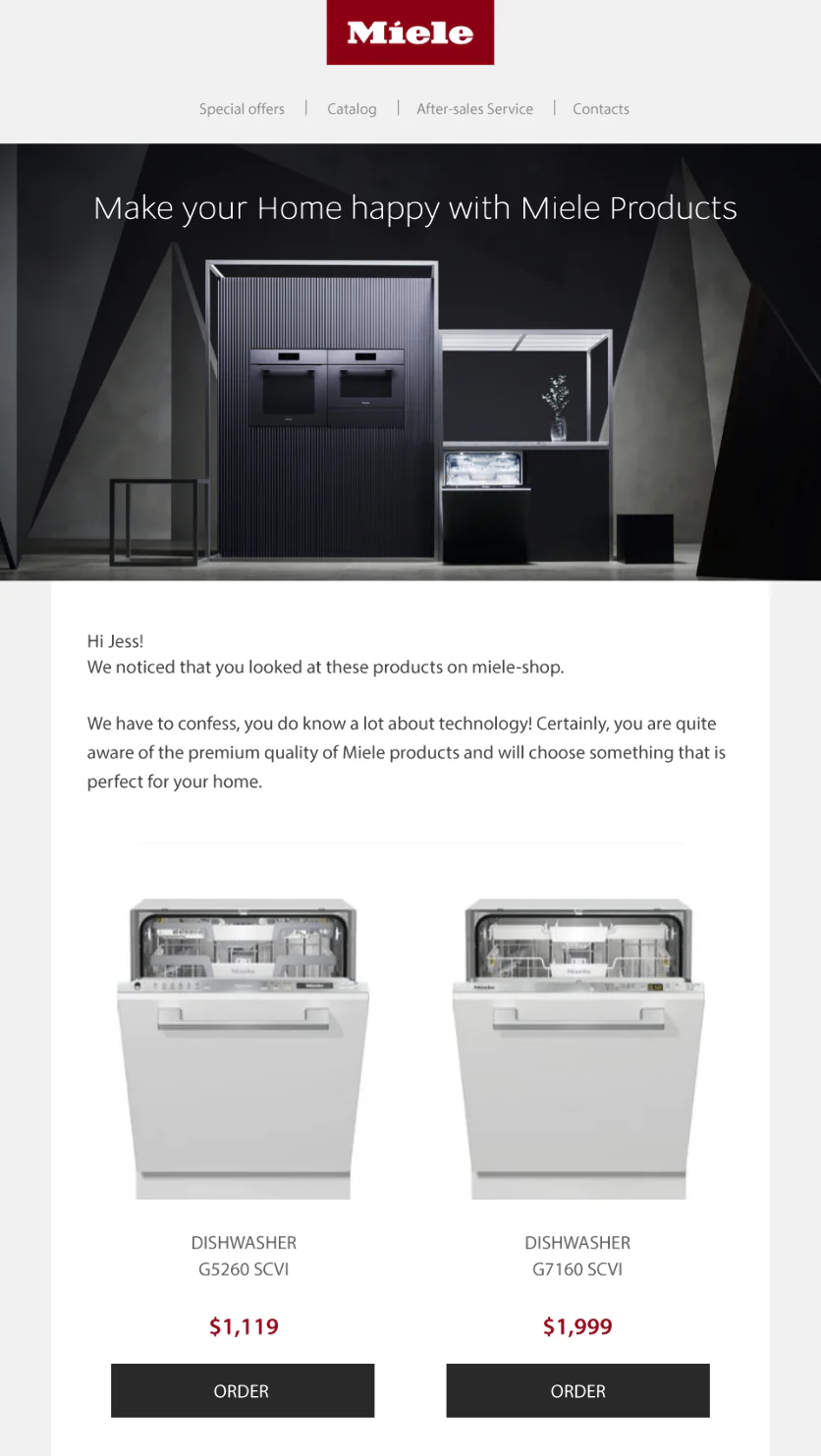
The email is sent if the customer hasn’t made a purchase within three days and has not received other trigger campaigns within six hours
Survey After Delivery and Installation.A service evaluation email is sent on a daily basis. Customers receive this message two hours after their order status changes to “Delivered.” This survey allows Miele to constantly improve the quality of its customer service.
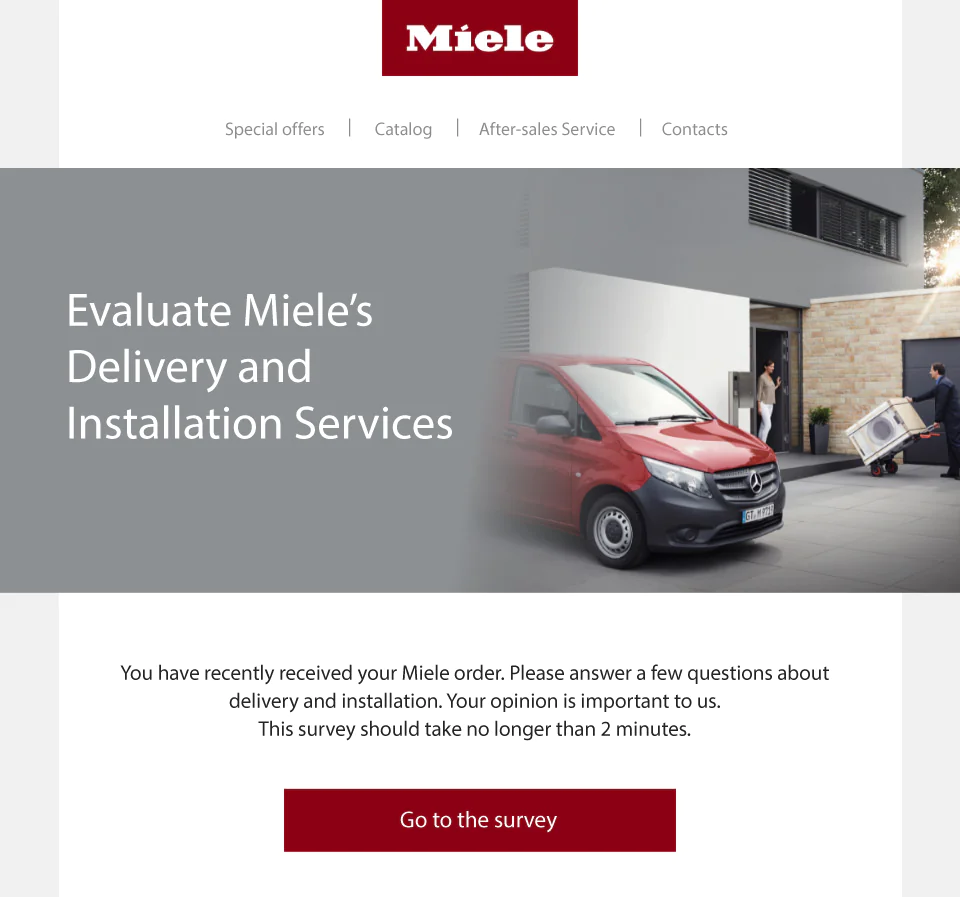
In addition to the survey after delivery and installation, Miele’s customers also receive an email asking them to evaluate the quality of their repair service, which mirrors similar trigger conditions
I really like the fact that the team at Miele are so fired up. They want to implement all the tools they can, use the capabilities of the platform to their fullest extent and are ready to experiment. Thanks to efforts from both sides, we are achieving amazing results.
I think the project’s main achievement was that we have managed to build a communication and lead generation system. We understand how to initiate communication with a customer and how to automate and simplify how customers place orders.
In essence, it was possible to build relations that benefit everyone. Customers receive valuable information in content-focused emails and exclusive offers in promotional emails. Thanks to these campaigns, the brand’s revenue is on the rise.
Maestra is the tool that holds everything together. We’ve been able to collect all the data we need, build an efficient communication system and continue to discover new ways of interacting with customers. Maestra completely covers every task we may need to complete, allowing Miele to implement all its short and long-term plans.
My favorite Miele campaign is the abandoned shopping cart for unregistered users. We show the customer a pop-up, offering them to either sign up for the mailing list or to receive one email with a selection of products.
This may seem like a generic campaign, but the pop-up gives it the edge that really makes it stand out.
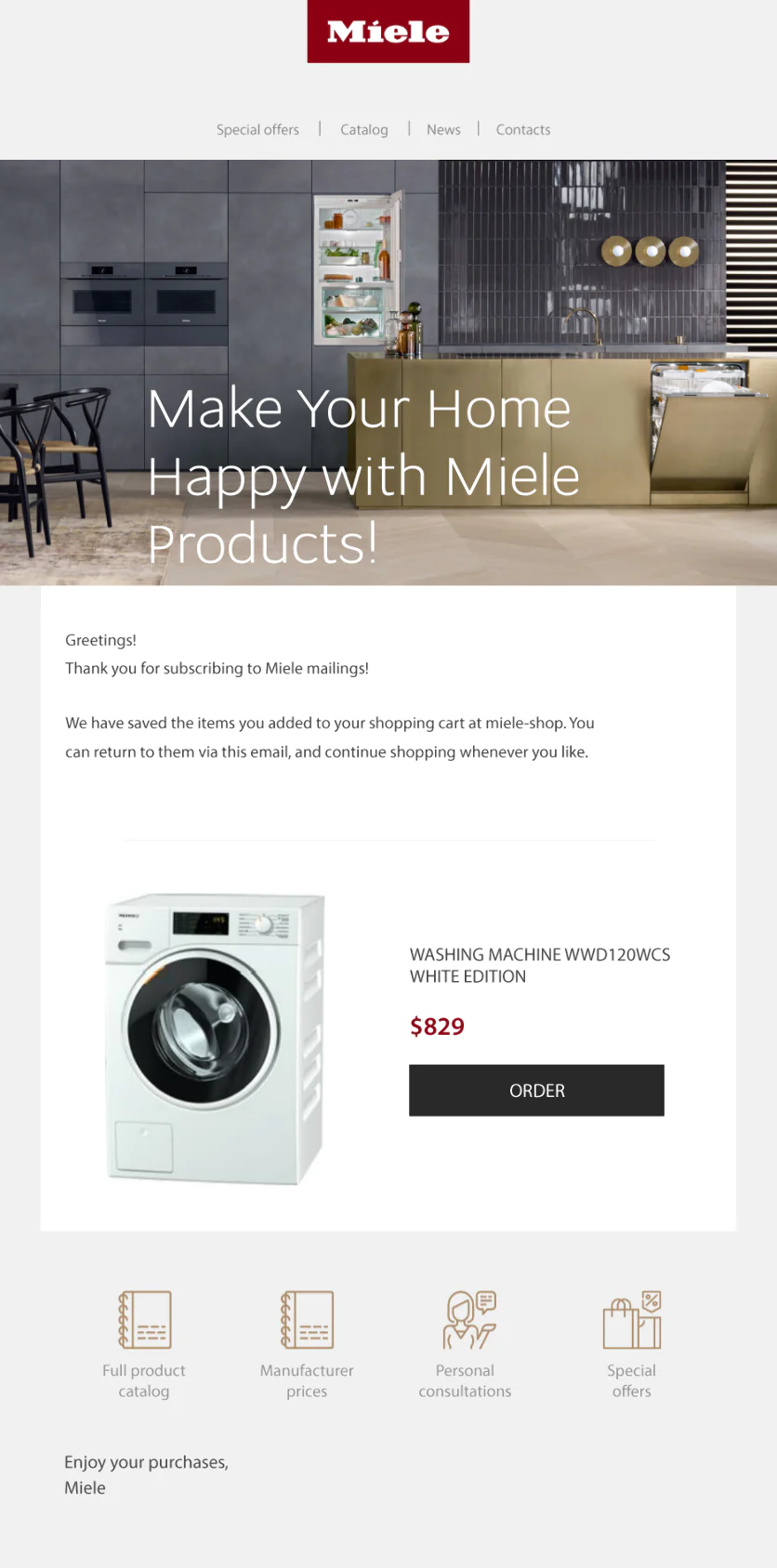
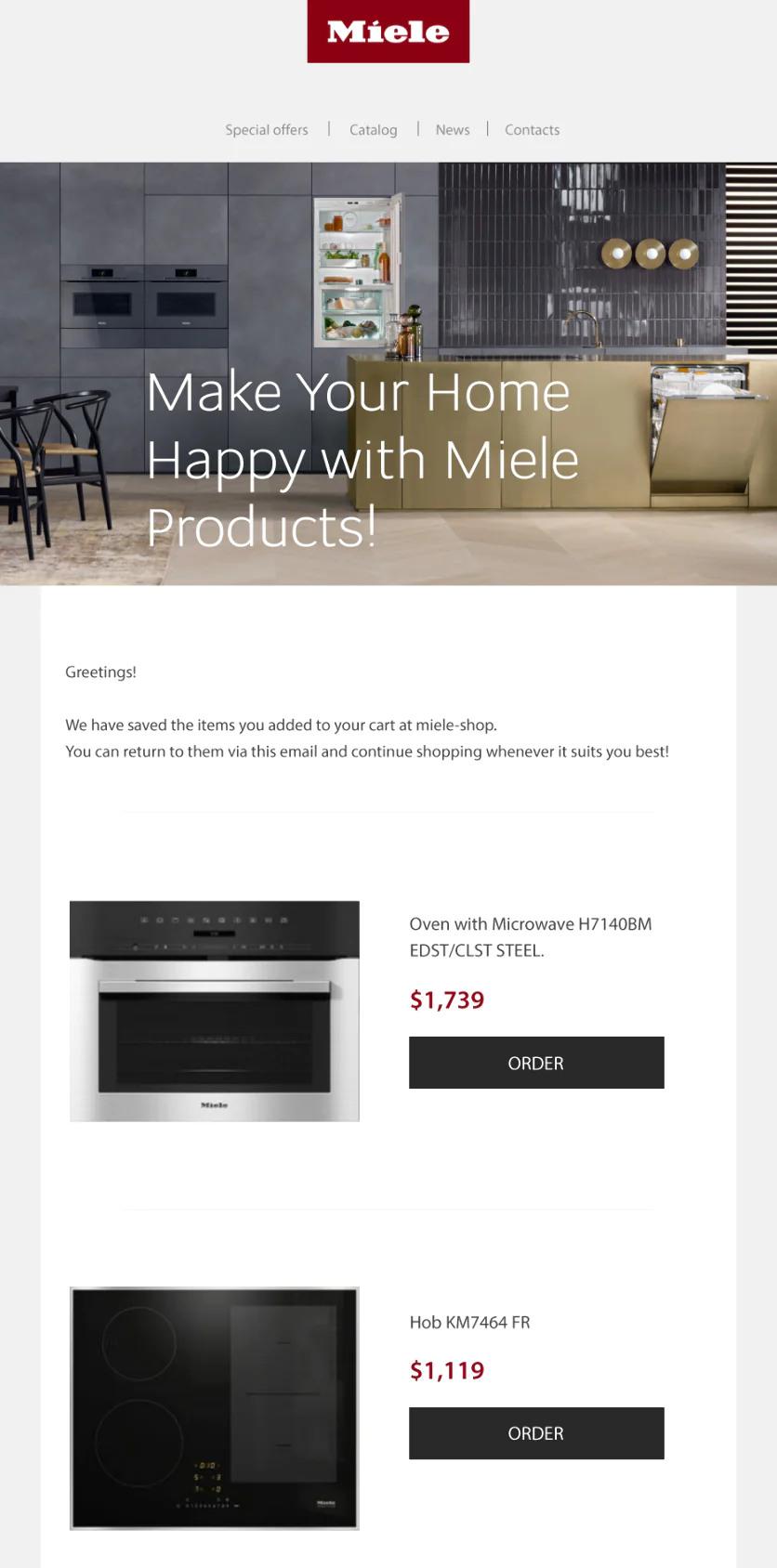
The text of the email changes depending on whether the customer has subscribed to the mailing list or simply asked to be sent a selection of products
Which Reports are Built in Power BI Based on Data from Maestra
At the start of the project, managers from Email Soldiers had to manually export data from Maestra and create reports in Excel. However, Maestra does not allow you to view geographical distribution in segments. To overcome this issue and automate data entry, we connected Power BI, which now allows Miele employees to view data in real-time.
Currently, the project has implemented five types of reports:
- A basic report on email campaigns with the option to differentiate data on bulk and automated campaigns
- RFM analysis with historical data and tracking of each segment’s changes over time
- Cohort analysis
- ABC analysis
- A geolocation report with a map
Next Steps
Add new locations: Kazakhstan and Ukraine in the near future.
Set up new reports in Power BI — such as survey visualization, repeat purchases and lead reports for the sales department, and use the data obtained to generate forecasts and improve communication.
Increase the number of automated campaigns: based on touchpoints (i.e. if they were added to our database after an event or at a specific store location), based on events (e.g. for birthday messages), or to collect personal details (e.g. asking customers to fill in their phone number). There are also plans to include product recommendations in emails.
Collect contact info in stores: tablets integrated with Maestra will be used to facilitate this.
Test AMP technology – so far, we have sent one campaign and our plan is to send out three more. The results we receive will decide whether the feature will be used in bulk campaigns or for specific campaign elements, such as checklists.
P. S. In this article, we mentioned our CDP module. Learn more about this module by following the link or reaching out to us.




